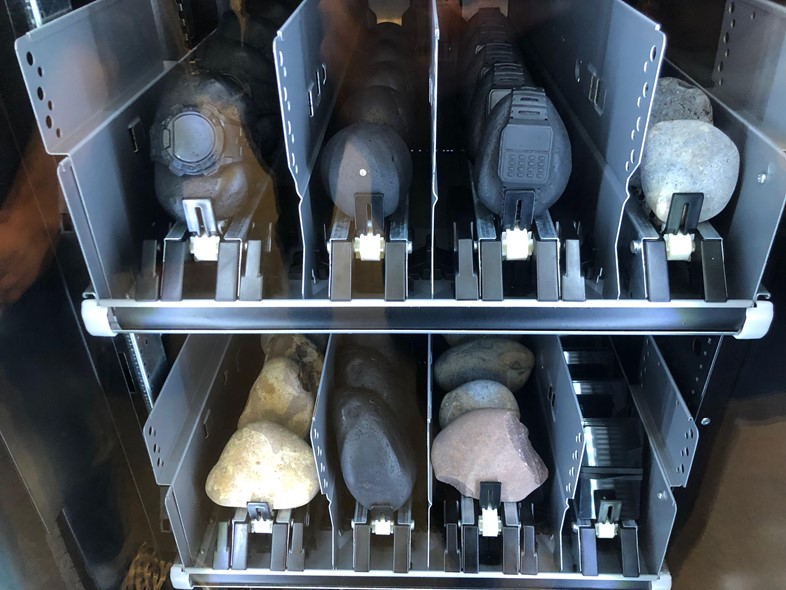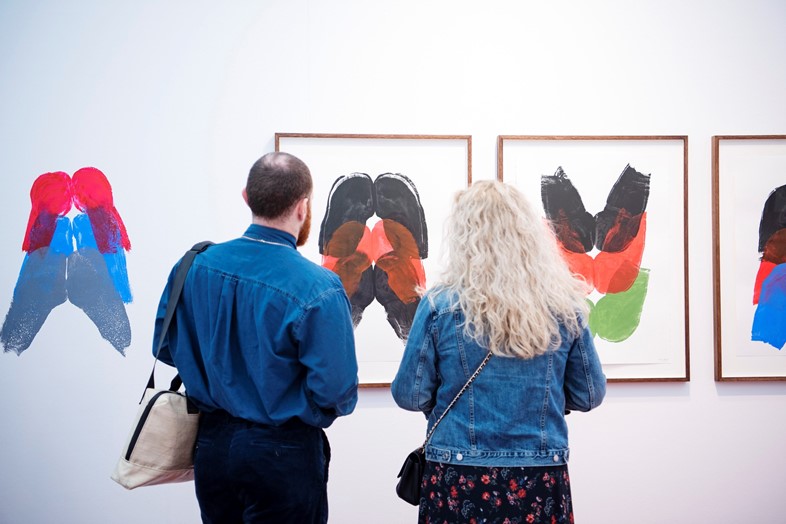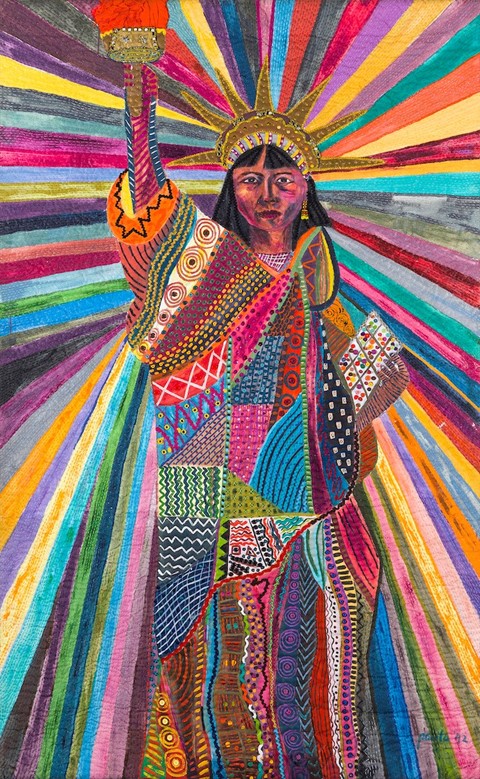Peter Yeung reports from the 2019 edition of Frieze London, the most international to date
“WELCOME TO THE SHITSHOW!” screams a special edition Jeremy Deller poster making the rounds during Frieze London 2019. It could apply to almost anything at the city’s most eccentric, brash and bewildering art event of the year, but the background image of red, white and blue stripes – the Union Jack – make clear that it’s a reference to Brexit, supposedly penned to happen later this month.
If that will be the case, Frieze has certainly not ignored the elephant in the gallery. More than 160 of the world’s leading galleries from 36 countries are exhibiting this year, the most international to date, including first participation from Brazilian, Lebanese and Estonian institutions. According to Victoria Siddell, the long-standing director of the fair, 2019’s edition is intended to “embody the exceptional international spirit of London, a city that is a meeting point for art, ideas and people from all over the world”.
On first appearances, little has changed. It can be infuriating, but it’s unmissable. All of the bizarros and peacocks of the industry gathered to see the future of art: curly-haired Frenchmen in beige turtlenecks; braying Tories in royal blue suits; youthful Japanese collectors in XL black jumpsuits; bespectacled Russians in crisp white shirts; the odd art student in a bucket hat; and of course, oddballs dressed as trees or bears or broken mirrors. Each year, the enormous white tent in Regent’s Park welcomes them all.

Yet Frieze London continues to adapt and alter almost imperceptibly. Ryan Gander’s installation at Tokyo-based gallery Taro Nasu contains a black vending machine that dispenses random objects – stones found on the beach, watches cast into moulds – for £500 a pop. They sold three on the very first day. In what is Frieze’s first augmented reality artwork, an installation by Korean artist Koo Jeong A called Density, turns very Pokémon Go in a sculptural treasure hunt around the surrounding park. Three huge floating slabs of ice, that can only be seen through an app, are hidden in the shrubbery.
In the main strand, there’s a hint of politics. Paris-based kamel mennour has a curious show by Neil Beloufa in which he constructs vessels made out of recycling goods that look like time machines, and canvases depicting waste-strewn beaches with plug sockets planted in the middle. Seventeen Gallery’s entire floor space is scattered with 160 dead parrots made of lead, a breed that apparently was imported from abroad but now menaces the biodiversity of this corner of London. Globalisation doesn’t work, it squawks.
Not quite so much can be read into Rio de Janeiro’s A Gentil Carioca, featuring a sleeping dog lying on the edge of the walkway as fair-goers stroll by, or the new iteration of Martin Creed’s bold floor tiles at Gavin Brown gallery, all contrasting primary colours and angles like a rainbow hit by an angry bee. Nor is there particular depth to the portrait of a satanic beast with horns inscribed the words “come on me, please” by Jonathan Meese at Galerie Krinzinger. But they’re fun all the same.

Immersive installations continue their inexorable rise. Last year, Turner prize-winning artist Laure Prouvost worked with an opera singer who would secretly listen to conversations made by visitors and then recite them in loud bursts of song, drawing attention to data privacy. In 2016, artist Julie Verhoeven took on the role of a concierge in a suite of the fair’s toilets.
This year’s offerings please equally. David Nolan Gallery’s stand has a bar hand-painted by Jonathan Meese, inspired by the mythology of a 19th-century Western saloon (bourbon tastings help get the immersion working). Kembra Pfahler’s “butt paintings” can be seen live in the making at Emalin, at the Focus section, with one freshly pressed onto the stand’s white walls. A tea party with Yasmin Jahan Nupur, featuring her own homegrown goods, explores colonialism over a cuppa. The bizarre highlight, however, comes in the form of Tang Dixin’s Rest is the Best Way of Revolution series, whereby the Shanghai artist carefully casts the body parts of any willing visitor in plaster.
Frieze London is often a sensory overload, sharp cuts of colour and texture devoid of context or curation. It’s perhaps no surprise, then, that the best work is found in the themed section, Woven, a collection of eight solo shows that explore the knowledge bound into fibre and textile work.

Filipino artist Pacita Abad’s glorious technicolour trapunto, or quilted paintings, at Silverlens Galleries draw on her transformational and empowering experience of leaving Marcos-era Philippines as a student activist for San Francisco. The idea is to make “visible the histories and continuous legacies of the colonial catastrophe,” according Cosmin Costinas, the executive director of the Hong Kong art centre Para Site, and curator of the section.
In any case, amid the Deutsche Bank and BMW blue-chip sponsorship, the revolution certainly won’t be at Frieze London. But there are traces of resistance in this art, however subtle they may be.
Frieze London is at Regent’s Park, London, until October 6, 2019.
